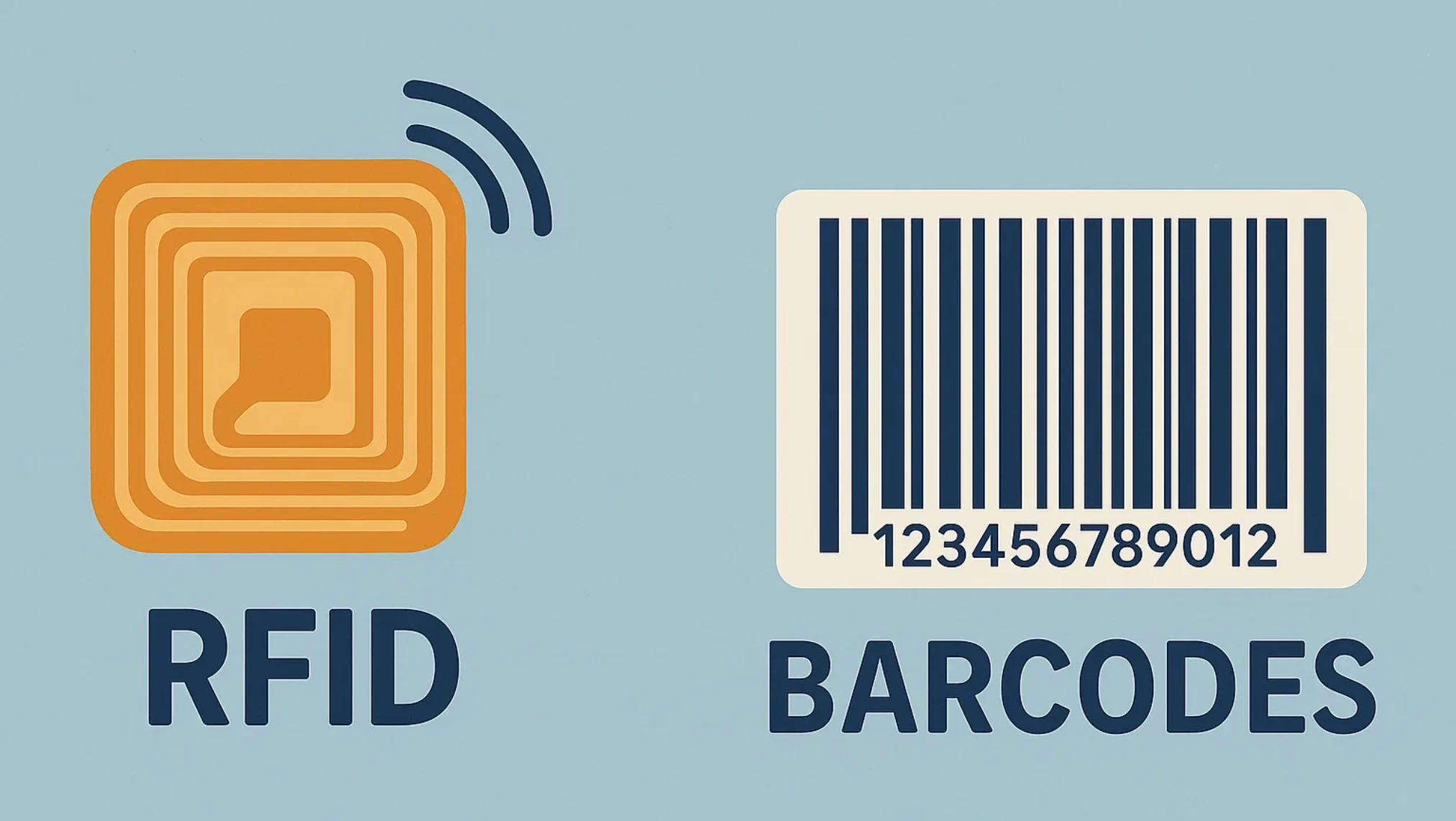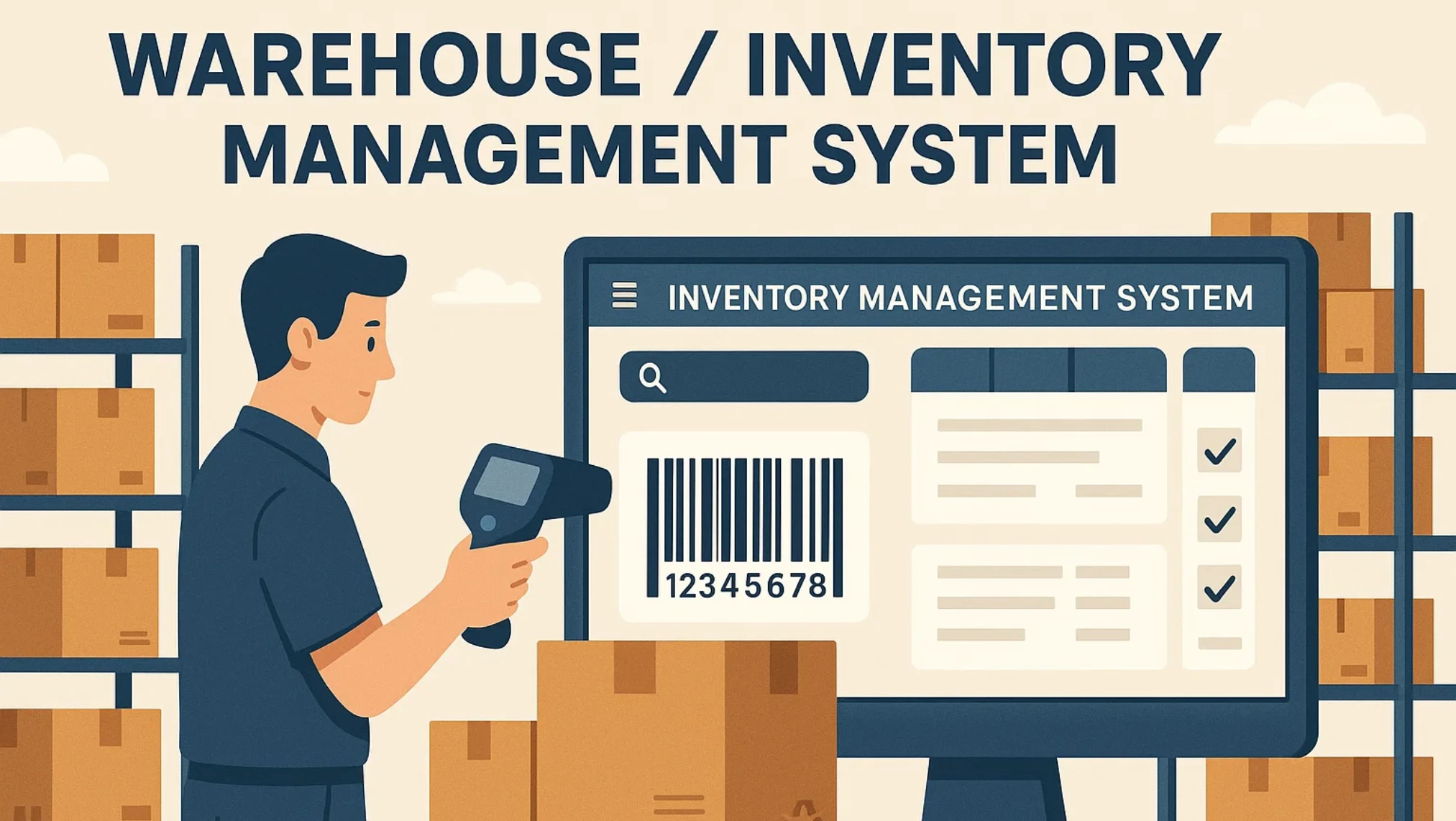An Introduction to RFID and Barcodes
RFID and barcodes are the go-to technologies for modern warehouses. Both facilitate more effective inventory control for companies and reduce manual errors. While barcodes are affordable and appropriate for straightforward tracking, RFID tags provide more advanced features like contactless reading and faster data capture. Together, they create a successful inventory management system that improves accuracy, saves time, and improves the overall productivity of the warehouse. Integrated in a Warehouse Management System (WMS), the technologies give companies real-time visibility into operations and enable them to make quick responses to customers’ demands.
Barcode Scanner
A barcode scanner is a device that scans and decodes barcodes printed on commodities. It scans the information encoded in the barcode and imports it into warehousing software for examination. Scanners come in different sizes—some handheld for easy movement and others fixed for application in automation settings.
Depending on the size and complexity of the warehouse, the correct type of scanner will make a huge difference in tracking inventory, order picking, and identifying products. Barcode scanners are simple to use and a good beginning point for digital inventory management.
Scanners and Features:
- Handheld scanners allow mobile use and flexible movement.
- Stationary scanners enable automation in high-volume areas.
- Laser scanners read barcodes using focused light beams.
- Image-based scanners use cameras to decode barcodes.
- Integration with WMS allows seamless data capture and inventory updates.
How Does a Barcode Scanner Work in Warehouse Management?
Barcode scanners form a critical component of the warehouse inventory process. As incoming or outgoing goods are scanned by employees, the barcode information is sent in real-time to the warehouse software. It helps to update the inventory quantities, confirm where the inventory sits, and fill orders. The system reduces manual inputs and delivers real-time information. By linking barcode scanners to a WMS, companies can monitor each product’s movement from the time it arrives to shipping.
How Barcode Scanning Facilitates Warehouse Operations:
- Automates data input and removes errors.
- Identifies quantities at receiving, picking, and shipping.
- Locates products rapidly on the warehouse floor.
- Enables rapid cycle counting and stock auditing.
- Easy order processing and faster shipping.
RFID Tags
RFID tags are tiny electronic labels that are placed on inventory or pallets. They exchange information with RFID readers through radio waves and do not require a line of sight. RFID tags come in varying types—passive, active, or semi-passive—based on power source and range. RFID tags can carry data like product ID, batch, and location. Paper barcodes are not as hardy as RFID tags, and RFID tags are best suited for high-volume use or abusive storage conditions.
Most Critical RFID Tag Features:
- Can hold more data than standard barcodes.
- Can be read without visual inspection, increasing speed.
- They are capable of monitoring bulk containers or high-speed zones.
- They are resistant to wear and can withstand harsh environments.
- Come in throwaway or reusable modes.
How Does an RFID Tag Work in Warehouse Operations?
RFID tags help automate inventory management by allowing products to be identified and tracked without scanning each item individually. Readers placed at strategic locations—e.g., entrance doors, shelves, or conveyor belts—transmit radio signals that read tags within range. This makes it automatic and faster to update the inventory. The WMS consolidates all the information from readers and updates stock levels in real time. RFID technology proves handy where products are stacked, sealed, or packaged together.
RFID Applications in Warehouses:
- Scanning inbound and outbound rapidly.
- Labor-free contactless tracking.
- Real-time visibility avoids overstocking and stockouts.
- Assists in tracing movement between zones or buildings for products.
- Avoids human intervention and allows automation.
Benefits of Using Barcode Scanners and RFID Tags in Warehouse Management
Both RFID and barcode technology implementations are the best of both worlds. While barcodes are best at item-level identification and low-cost environments, RFID has automation and high efficiency in bulk and high-speed handling. When used together, they can provide the best visibility, accuracy, and responsiveness in the warehouse. With dual application, businesses can optimize their processes and apply the best technology appropriate for a specific function, minimize delays, and optimize customer satisfaction.
Advantages of Dual Integration
- Barcodes provide single-product scan accuracy.
- RFID supports high-speed scanning without human input.
- Enhances real-time visibility of inventory and shipments.
- Reduces manual labor, errors, and processing time.
- Improves overall warehouse productivity and service levels.
Challenges of Implementing Barcode Scanners and RFID Tags
Although helpful, the implementation of barcode and RFID technology is not without problems. Both RFID tags and readers are costly, particularly for large warehouses. RFID is liquid or metal-sensitive, making efficiency lower. Barcodes need to be on clean labels and surfaces and become unreadable if damaged. Both demand the right hardware, training, and integration with existing systems, for which companies have to pay an expense. Being with the right implementation partner, such as BEMEA, is the solution to these issues.
- Substantial up-front costs are associated with RFID hardware and system installation.
- Positioning the readers and technical interference.
- There is label readability, and a line-of-sight is required of the barcode readers.
- Legacy system integration may require custom development.
- Training and process change of warehouse personnel are necessary.
Software Configurations for Barcode and RFID System Implementation
For barcode and RFID technologies to work effectively, the software must be configured correctly. This includes setting data fields, item code definition, and attaching devices to the base WMS. In the case of barcodes, the system needs to be capable of reading different types of barcodes and integrating scanner input into inventory operations. RFID systems need configuration of tag mapping, frequency, and reader zones. Hardware and software synchronization are needed to keep inventory data in a correct and usable format.
Principal Features of Software:
- Choose optimal barcode symbologies according to your product list.
- Establish RFID-tagged, special item codes.
- Configure reader zones and filters to reduce noise.
- Ensure real-time synchronization of scanners with WMS.
- Periodic software upgrades to adapt to changing operations.
Integrating Barcodes and RFID in Your Warehouse
The best way to integrate RFID and barcodes is through a stable Warehouse Management System. BEMEA’s WMS provides you with one platform where the two technologies live in perfect harmony. Use barcodes for item-level activity and RFID for bulk or automated activity. Our AI-driven platform ensures all scans, reads, or updates are presented on your dashboard in real-time. Utilize our expert team and Microsoft-supported technologies to go live with zero downtime.
Why Integration With WMS Matters:
- Simplifies technology management in one place.
- Offers accurate counts anywhere.
- Average speed (RFID) with accuracy (barcodes).
- Saves time when deploying with pre-configured connectors.
- Grow with your warehouse.
Don’t let outdated systems keep your warehouse in the dark. With Business Experts MEA’s AI-based Warehouse Management System, you can drive inventory more wisely. Whether barcodes, RFID, or both are used, our system will provide you with real-time visibility, automation, and control over your operations. Time to guess less and optimize more










